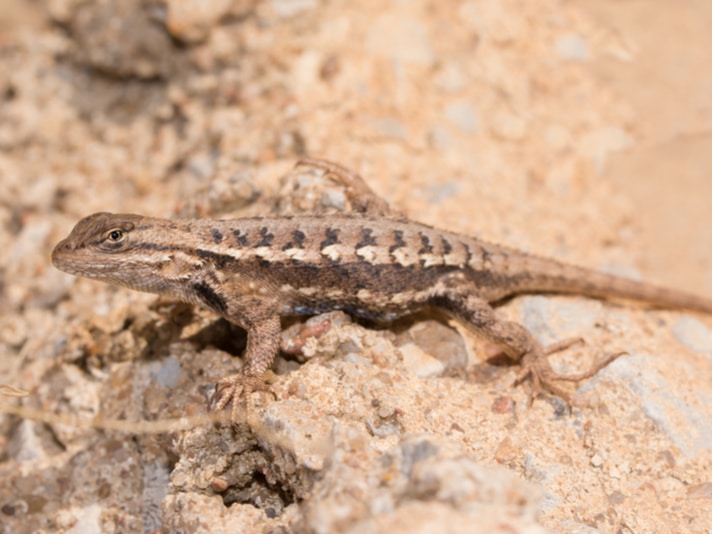While visiting a reptile show brings a bunch of reptiles in one place, there is nothing like seeing them in the wild.
Although it can be exciting to visit a herp show and see a large variety of reptiles and amphibians all in one place, there is something magical about seeing these animals in their native environment. This article provides information on when and where to go, what to do, and what to bring, and it also touches on some of the laws that pertain to the hobby.
With combined herping experiences of more than 95 years, we acknowledge that searching for reptiles and amphibians can be detrimental to habitat because many of these animals are adapted to living in small, often fragile, microenvironments. There is no doubt that any foray into these animals’ native environment disturbs them to some extent, but the strategies described here will serve to minimize the impact of searching for herps in the wild.
Two Important Ws:
When and Where
When planning a herping trip, deciding on the when and the where are two of the more important considerations. We live in the Northern California foothills, and activity periods for native herpetofauna change over the course of the year depending on the species.
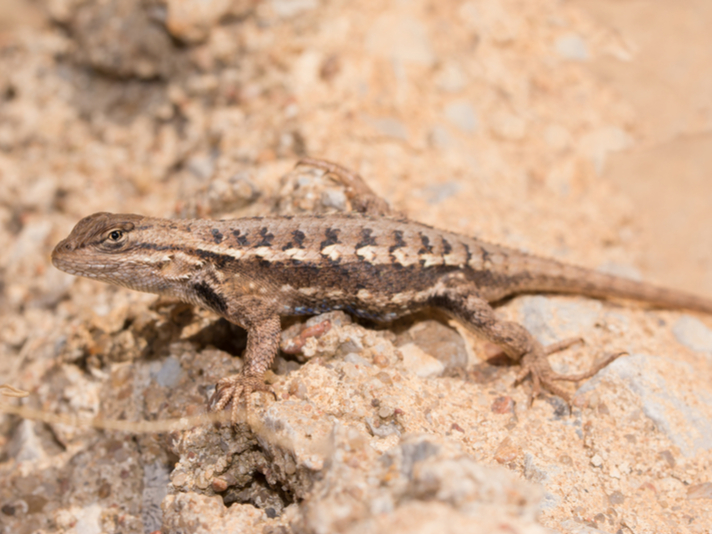
Sari ONeal/Shutterstock
Eastern fence lizard (Sceloporus undulatus).
We have found reptiles and amphibians successfully every month of the year in Northern California. In general, amphibians are more active during the cooler months (November through March), and reptiles are more active during early spring through early summer. In early fall after the first rains there seems to be another increase in activity. Even the more warmth-loving reptiles can be found during the winter if one knows where to look. These changes in surface activity are relevant in other parts of the United States, as well.
Read More
Herping Texas’ Thicket National Preserve
Herping the Rare Western Chorus Frog
If looking elsewhere in the country, take several things into consideration. Winter is usually a poor time to launch a herp excursion because it is the period that many animals are dormant. Spring, summer and fall offer a much greater likelihood of seeing a wide variety of reptiles and amphibians.
Another consideration, especially if herping in the Southwest, is the time and quantity of recent precipitation. Rain is an important variable affecting the surface activity of desert animals. Usually, regions experiencing severe drought are not productive, but falling barometric pressure can lead to increased activity, presumably because the animals are anticipating rainfall.
Moon phase also appears to play a role in determining surface activity of nocturnal animals. However, some nocturnal reptile or amphibian species do not seem to be influenced by moon phase; others seem to be influenced by the illumination of a half or full moon.
Field herping is not an exact science, and there are many exceptions to the above considerations. For example, we have observed many interesting animals during the full moon in regions experiencing a drought and high pressure.
Road Herping
From our trips to various regions of the country we have developed some general guidelines with regard to the best places to observe wild reptiles and amphibians. If one wants to photograph animals in their native environment, state and national parks can provide some of the best places to observe them. Those hoping to capture animals for maintenance in captivity, however, should avoid these areas because collection is strictly prohibited.
In this day and age it is unfortunate that if you are driving the roads slowly at night in a national or state park, you are immediately suspect for illegally collecting animals. One way to circumvent this is to go to the visitor center first and explain your intentions to personnel. If you plan to be on the roadways at night photographing animals, say so. Expect your car to be searched. Do not carry any collecting equipment or, worse, previously collected animals into these parks. We have been given permission to look at animals on the roadways at night on several occasions. These parks are a great resource for acquiring images of hard-to-find animals as well as images of pristine landscapes.
Driving roadways is a great way to encounter reptiles and amphibians. Regulations for this activity vary by state, but typically it is not against the law to drive roadways in search of herps. In some states, though, it is now being forbidden.
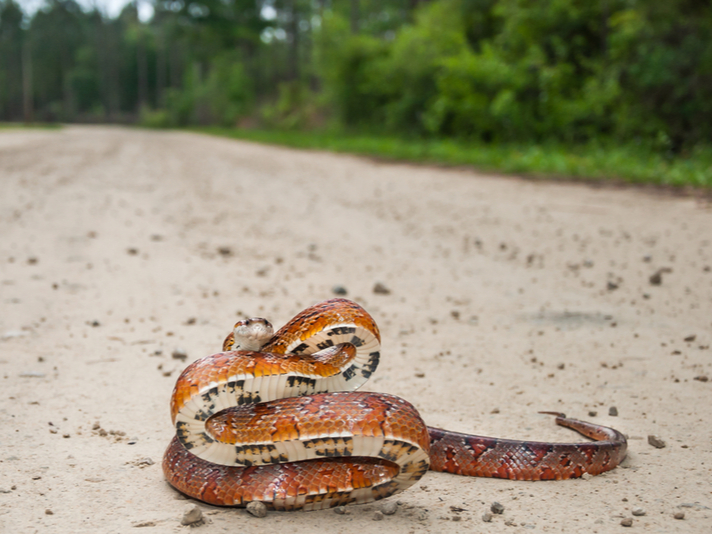
Jay Ondreicka
Corn snake (Pantherophis guttatus) in a defensive posture.
In the context of this article, “road cruising” or “night driving” means to slowly drive along infrequently traveled roads during good herping conditions to look for animals either crossing or basking on roads. This is one of the most productive ways of looking for reptiles and amphibians because it allows one to cover a large area in a shorter period of time. Once an animal is observed, park the car in a safe spot off the roadway, and walk back to the animal. Use common sense when crossing the road to inspect it. Often motorists are not expecting to see someone crossing the road at night. Also, carry a snake hook to safely remove venomous serpents from the roadways.
Another successful searching strategy is to look under objects during good herping conditions. Artificial cover is strewn across the country, and during certain times of the year, boards, mattresses, tin sheets and other items can harbor numerous reptiles and amphibians.
Sheets of tin formerly used as barn roofing commonly shelter reptile and amphibian life, especially in early spring. As temperatures increase the likelihood of finding animals beneath tin decreases because it attracts considerable heat and does not provide any insulation to the ground below.
Later in the year wood cover is usually a better bet. It provides insulation and does not attract as much heat. Sheets of tin can provide refuge to animals at most times throughout the year; the exception is during times of extreme hot or cold temperatures.
While looking for frogs, drive through habitat and occasionally stop to listen for calling males. This is a successful strategy to find breeding pools. We have located various frog and toad species employing this technique. Make sure you are hiking in legal areas. There is nothing more disconcerting to landowners than seeing lights moving across their property after nightfall. Should they call local law enforcement, it may be difficult to explain what you are doing wearing a headlight, waders and a dip net.
Apply this principle generally, too. Always be aware of your surroundings. If you plan to venture onto private property, ask landowners for permission. Typically, they are accommodating, and sometimes they even ask herpers to remove venomous animals from their property.
Protecting habitat is also an important consideration while searching for reptiles and amphibians. Try to stay on trails in parks and developed areas to protect the vegetation. If you look under a rock, replace it exactly as you found it. The same should be done for any object under which you look. This ensures the animals use the habitat again, which affords you the opportunity for future observations. Herpers should also be cautious when divulging favorite herping locales. Some people are more interested in collecting animals than in preserving their habitat.
Preparing for your First Herping Expedition
There are many important items to bring on a field excursion depending on your target animal and the trip’s duration. Often, hiking long distances to good habitat is involved, so planning a herping trip is similar to planning a day hike. A good, sturdy pair of hiking boots is essential. Sunscreen, a hat, a long-sleeved shirt and long pants are also recommended, particularly if you expect brushy areas. Gloves are also advisable if you plan on lifting objects. Not only will these help prevent damaged fingertips, but they also protect against envenomations by spiders, scorpions, wasps and centipedes. A good field guide to identify herps is a must.
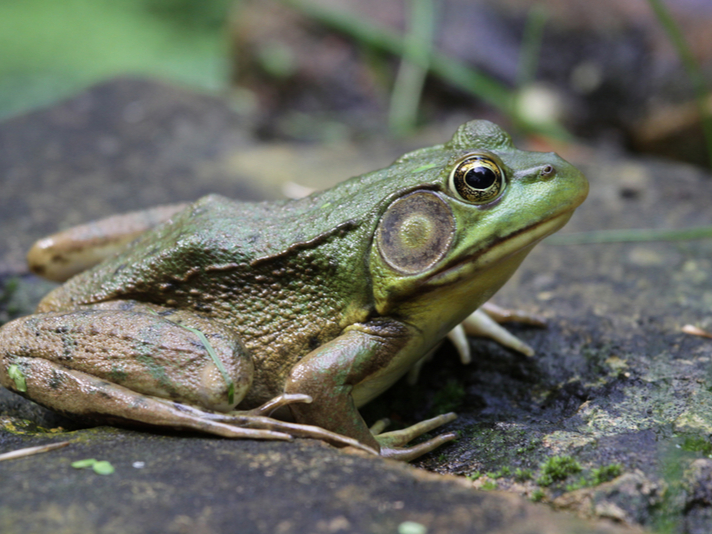
Chris Hill/Shutterstock
North American bullfrog (Rana catesbeiana).
Additionally, be knowledgeable of some of the more dangerous, or at least more bothersome, conditions you might encounter during your excursion. One plague on herpers in most of North America is the toxins released by the plants of the family Anacardiaceae, such as poison oak, poison ivy and poison sumac. Of course, avoiding contact with these plants is best, but exposure is often inevitable in many areas. Soaps such as Tecnu or Zanfel are helpful in washing off the irritating oil, urushiol, in these plants.
Insect repellent also is useful for prevention of mosquito, tick and chigger bites. Spraying a good repellent with DEET as the active ingredient around the waist and on the bare legs, especially above the tops of your socks, is effective in reducing chigger bites. This strategy works well in reducing mosquito and tick bites, as well. Wearing light-colored clothing when hiking through tick country helps us spot the dark insects on the light background. Sunscreen is also an excellent idea. It prevents severe burns, which are painful at the very least, and they can be dangerous.
Snakebite is perhaps the biggest concern for adventuring herpetologists, particularly when treading remote areas where medical help is scarce. This is where a good pair of hiking boots is fundamental to being safe in the field. In areas of tall grass, leggings also may be warranted. Be knowledgeable about how to best deal with envenomation in the field; many field guides have valuable information on the treatment and prevention of snakebite. A Field Guide to Amphibians and Reptiles in Arizona has some good basic do’s and don’ts. A snake hook is also helpful in moving a venomous snake off the trail or for taking a picture. Being properly prepared makes a herping expedition much more enjoyable.
If collecting animals is your goal, research and understand local regulations, and purchase the correct permits to collect. Each state differs in its requirements for legal collection of nonprotected herpetofauna. This information does not apply to protected species; they typically require a special permit, such as those issued for scientific collection. Most states have a website that provides information about legal collection of reptiles and amphibians. Review these for information before embarking on a trip.
Herping at Night
In recent years, we have taken numerous night hikes in various regions, particularly the Southwest. Such trips can be rewarding, but the darkness adds a new element of danger. We cannot stress enough how important it is to make sure your surroundings are not private land or otherwise off-limits. You need permission to herp private property. A good light source is paramount if hiking rugged terrain. We prefer headlights because they keep your hands free to move branches and to climb rock faces. Of course, water is always a good idea, and a global positioning satellite helps you get back to your automobile.
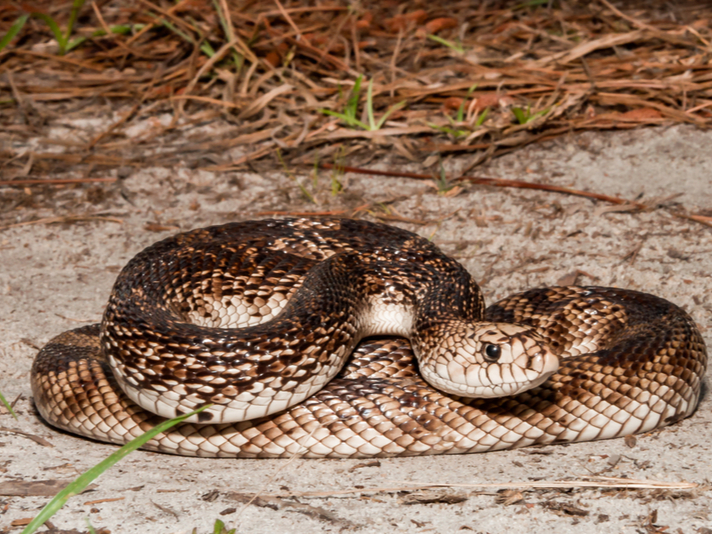
jay ondreicka
Florida pine snake (Pituophis melanoleucus mugitus).
When night walking, we usually like to arrive at the area right at sunset. As we leave the vehicle we mark on the GPS where our car is parked. We try to use as low a setting as possible on our headlights to allow for maximum battery life.
Once you become accustomed to walking with a headlight at night, your efforts will be rewarded. Unlike roadway herping, walking allows herpers to observe animal interaction within their native environment. Bringing a camera along allows you to document what you see, and you never know what you might find.
Lasting Memories
This brings us to our final point: Always travel with a camera. Today, we do a lot more herp photography than collecting. Our gear consists of a digital single-lens reflex camera body, two lenses (a macro and a zoom for habitat shots) and a flash. We also carry light-bouncing panels to manipulate the light in the field. Finding a rare species and taking its photo where it was found is rewarding. The animal is sent on its way, and you have a beautiful memory of it.
Herps react to observers differently. Lizards usually become accustomed to photographers, and they often allow a close approach if they don’t feel threatened. Snakes usually calm down after a few minutes of gentle handling. After you snap a few images, the animal can be released. If you take the animal out of its environment for a photo shoot, make sure you mark on your GPS where it was captured. Then you can release it, preferably the next day at or near the same time of day, at its exact site of capture.
Planning for days or perhaps years and driving for hours only to release an animal you finally captured may be difficult. However, unless that animal is one you were searching for and planning to keep beforehand, it makes sense to take a photograph and leave the animal behind. Not only will the animal be serving its biological purpose, but it may also provide excitement for other herpers that come along in the future. All the preparation will still have been worth it because your trip will undoubtedly be less fraught with stress and much more enjoyable.

